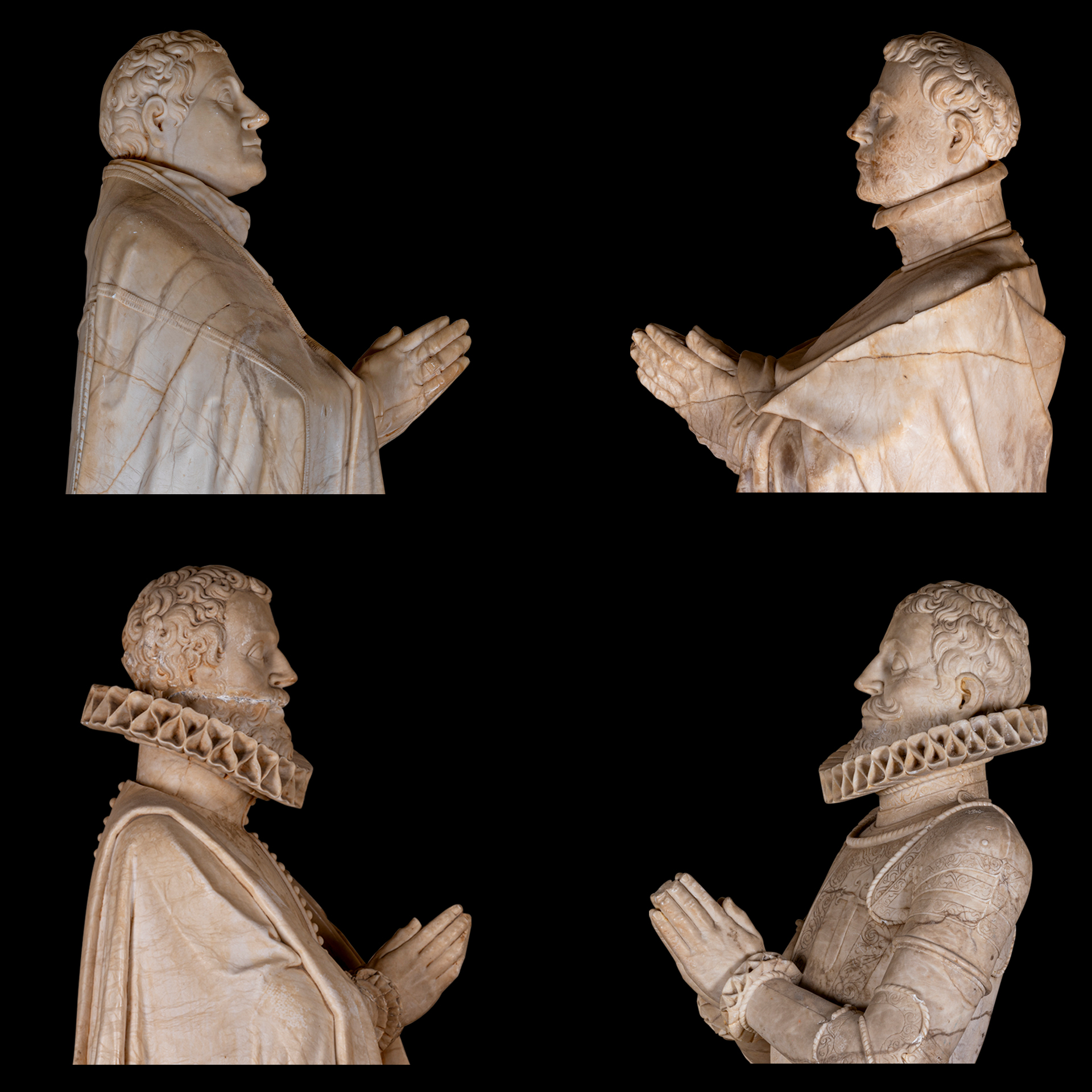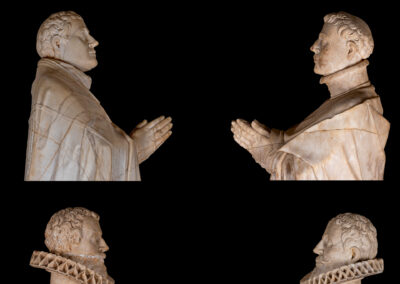These four white marble statues represent four brothers of the Trasmeran lineage of Acebedo who lived between the 16th and 17th centuries and two of them stood out as prelates in the service of the kings, from the second to the fourth Felipe, both reaching the presidency of the council of Castile, which made the chronicler Matías de Novoa exclaim that "...".no family has ever been heard of a mother who gave two children to her mother.The dignity so superior and which, after the royal person, is not recognised nor is there any other more considerable dignity than the royal person.".
The youngest of them, Fernando de Acebedo, by contract of 5 May 1612, while still bishop of Osma, contracted with the Soria sculptor Gabriel de Pinedo for the praying statues of his brothers Juan Bautista and Juan. This contract mentions that the praying statues of his other brother, Francisco, and the one of himself had already been commissioned from another sculptor, also from Soria, Esteban Fernández. A year later, in 1613, having just been named archbishop of Burgos, he ordered the construction of a palace with a classicist façade adjacent to the tower that his parents, Juan González de Acebedo and Sancha González Muñoz, had built in Hoznayo, the site of his lineage, to which he would later add a chapel with Herrerian traces dedicated to San Juan Bautista (Losada Varea, 2007). (Losada Varea, 2007).
The precedence of these contracts for funerary bundles with respect to that for the erection of the palatial chapel is evidence of the family pantheon character with which its promoter conceived it, possibly inspired by the model that, a few years earlier, Francisco de Mora had designed for the Duke of Lerma in the convent of San Pablo in Valladolid, a project that also contemplated two arcosoliums for the splendid praying bundles cast in bronze by Juan de Arfe, according to a design by Pompeo Leoni.
The main stipulations of the contract were the following: that the sculptor should be subject to models "...".of clay to be used as a trace for him"He was obliged to sculpt the heads in the town of Burgo [de Osma], at that time an episcopal town, evidence that the bishop, Fernando de Acebedo, wanted to closely control the process of the only elements absent in the clay models and that, if Esteban Fernández did not fulfil his commission, Pinedo himself would have to take it on. The letter of payment dated 9 December 1617, published in 1948 by the Marquis of Saltillo, states that this was the case, as he was paid "...".the four alabaster bundles that he made for the burial of his Most Illustrious Majesty and his brothers"and also the four boxes he has made for their transfer.
The statues are placed under open arcosoliums in the side walls of the main chapel and transept of the church and their composition derives from the model that the Leoni family had created, in El Escorial and in Valladolid, for the kings and for the Dukes of Lerma. It should be remembered that both Gabriel de Pinedo and Esteban Fernández had developed their careers as image makers and architects of altarpieces in churches in Soria and Burgos and that they were not commissioned to invent a design but, as the contract states, to replicate clay models that the Bishop of Osma must have obtained from the circle of sculptors who worked for the court, where he undoubtedly had powerful contacts, since, at that time, his rise - like that of his brothers - was due to his being the workmanship of the Duke of Lerma, as Quevedo reproached him - after the fall of the latter and his son - accusing him of having betrayed his protectors.






